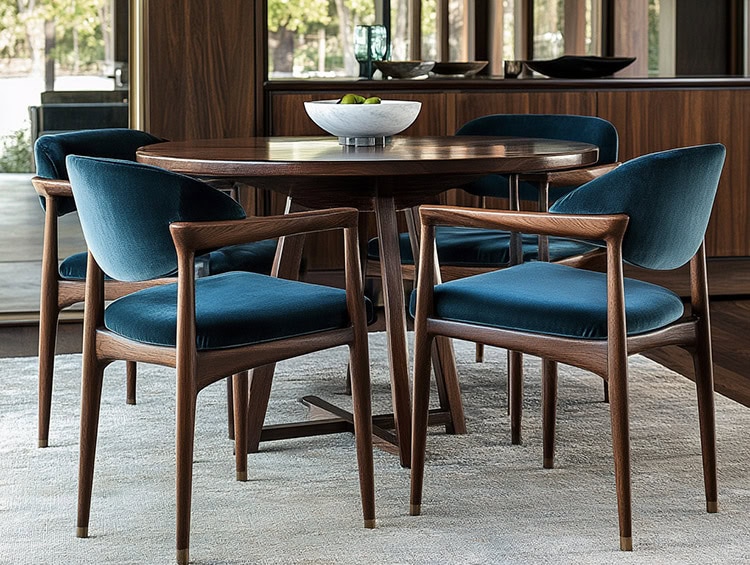At one time, it was commonplace (mainly for people who didn’t have guidance from a professional interior designer or decorator) to match wood furniture sets in the home. Fortunately, those days are behind us. If you think about it, keeping the wood tones the same shouldn’t have been a thing in the first place. In fact, when all the wood pieces in a single space share the same tone, the room falls flat. Why? Because nothing has the chance to stand out.
Mixing wood tones, however, gives a layered look that’s full of texture and depth. The overall feel is more organic, if you will, in that it appears as though individual pieces have been collected over time, rather than purchased right off the assembly line.
Although there is no magic formula when it comes to mixing wood finishes, there are some guidelines that can be incredibly helpful to follow.
- Connect the undertones. Although shades of wood vary, they generally fall into one of two categories: warm or cool. By combining wood with the same undertones, you can keep the room looking harmonious rather than disconnected. Finding the undertone can often be done by looking at the grain in the wood, which tend to exhibit hints of red, dark chocolate, or light tones. Follow their lead you as you piece together wood furnishings within the space.
- Pick a dominant wood tone. A dominant wood tone can serve as a great jumping off point as you begin to pull other tones into the room. If you have wood floors, use them as your dominant wood tone. If not, pick the largest piece of furniture in the room and then build around that.
- Use a rug to soften the mix. An area rug can bring common ground if there are multiple furniture legs in wood tones. A good rug can also create a soothing transition between the furniture and wood flooring (if you have it).
- Create balance. Mixing wood tones can be a bit of a balancing act. If you do choose to use multiple tones, try to spread them throughout the room rather than lumping them all to one side.
- Contrast furniture and flooring. If you have wood flooring, your furnishings can often get lost against it. To break up the monotony, pair light furniture with darker flooring (or vice versa). This will create a visual definition between the two.
- Create continuity with color. Sometimes it seems as though your wood mixing has gotten a little out of control. If that has happened to you, tie it all together with an accent color. Accessories such as accent pillows, throws, and lampshades in the same color can help the room make sense.
- Use each wood twice. Even an eclectic look can look cohesive. To make it happen, use each wood tone twice to create a layered look that feels pulled together.
Be sure to stop by our showroom to see what wood furniture and accessories we have that can help you create a space full of beautiful mixes. And, while you’re at it, check out our fabric selection to find something that can help you tie it all together.

















